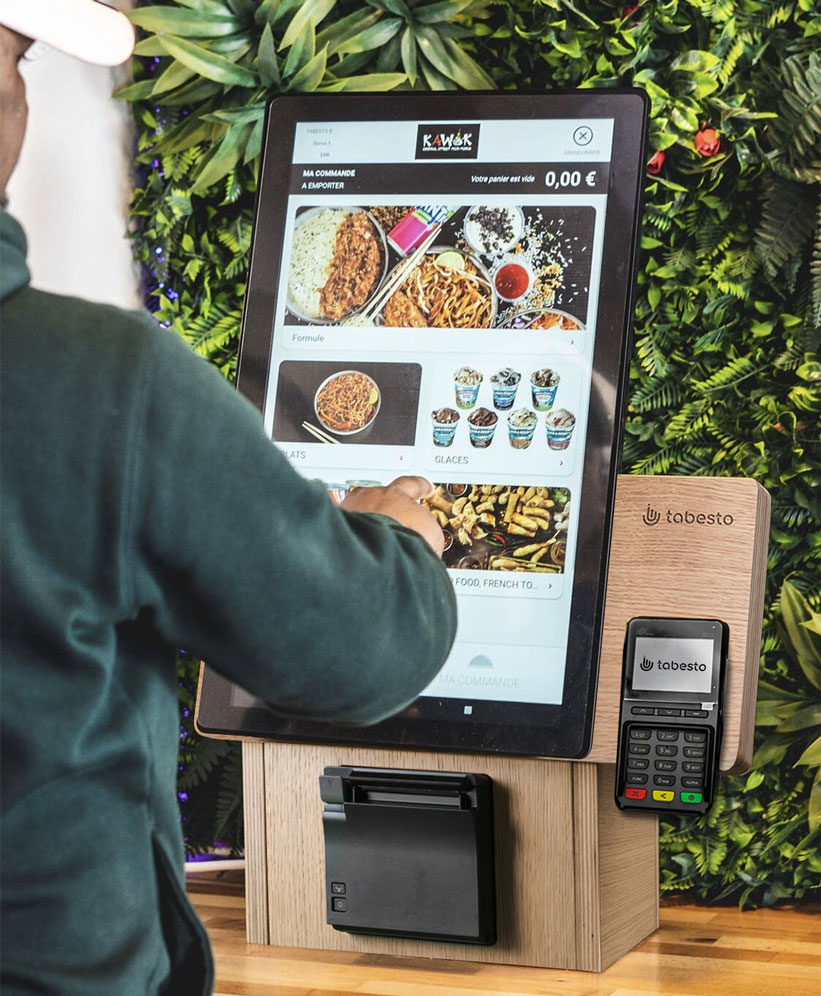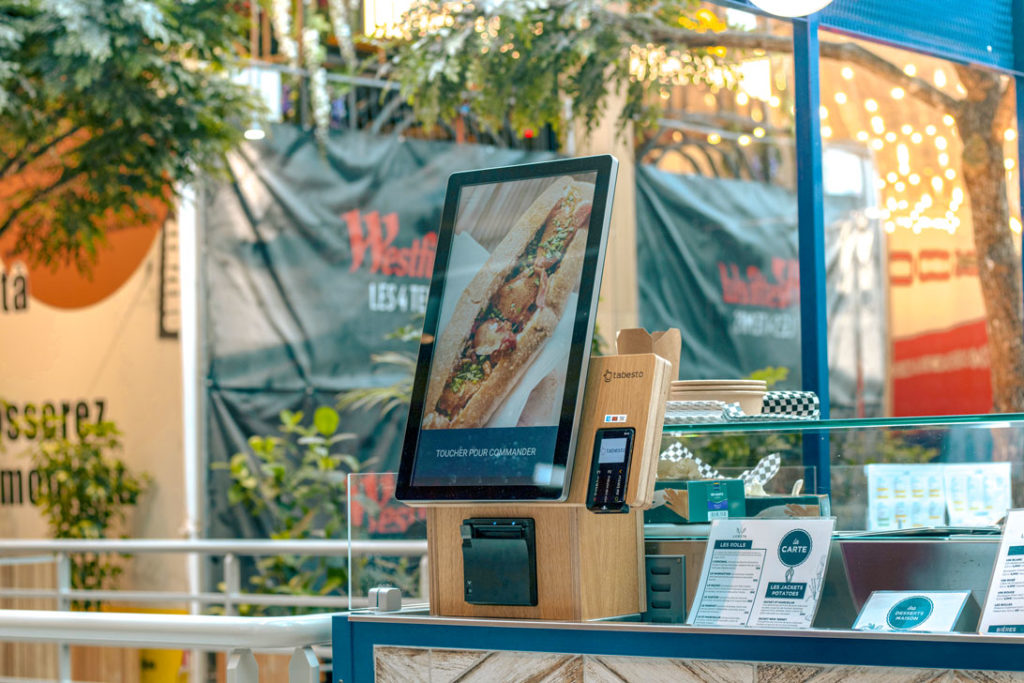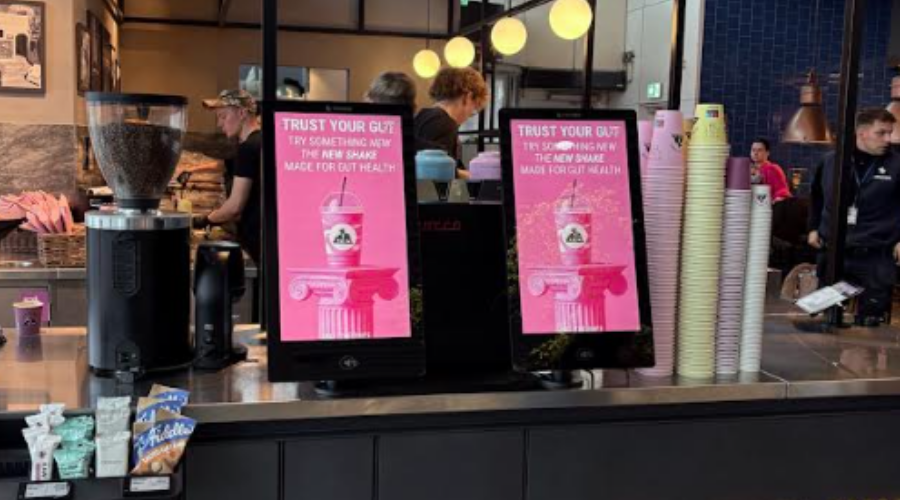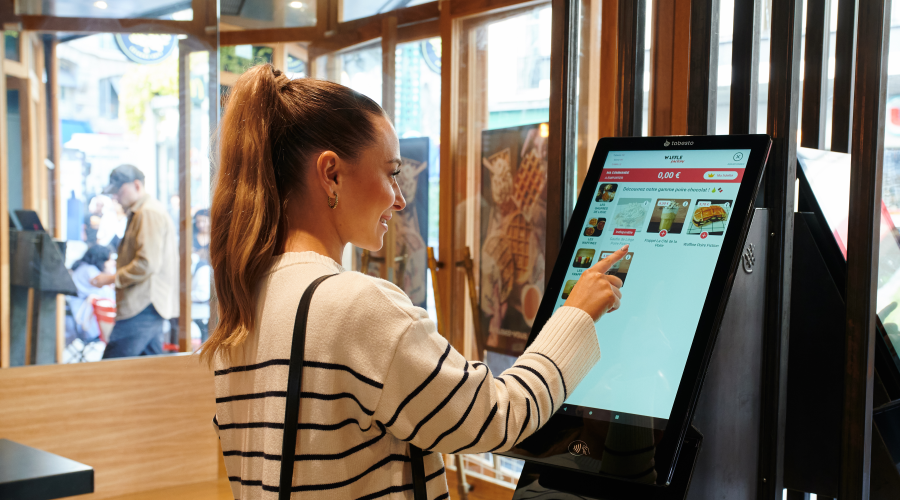Self-service in fast food restaurants
The restaurant world is a sector in the midst of transition towards a model in which new technologies are increasingly involved in transactions. This transition is made possible by the standardization of numerous digital services and products.

The restaurant world is a sector in the midst of transition towards a model in which new technologies are increasingly involved in transactions. This transition is made possible by the standardization of numerous digital services and products: cash register software, order kiosk, QR Code, online ordering and delivery, etc.
Fast food is a particular segment of the restaurant market. Its main value proposition is speed. Customers consume meals prepared and served quickly with lower average prices compared to traditional restaurants. According to the report of Statista On fast food in France, French people are seduced by fast food mainly for the speed of service (72%), for the conviviality (29%), and for the quality of the dishes (27%).
All this makes fast food a breeding ground for digitalization and the development of Self-Service Technologies (TLS): technologies that allow individuals to perform a task or transaction without any interaction with service personnel. (Baba, et al. 2020)
In fact, this article will discuss the benefits of adopting self-service technologies in the specific case of fast food.
Self-service: more efficient flow management
When people go to a “fast-food” restaurant they expect, as the name suggests: to be served quickly. That's what makes fast food so successful. This popularity has a counterpart: the volume of customers is most often higher than the average. The staff is regularly overwhelmed by high flows, which makes it difficult to avoid congestion, especially during rush periods.
Self-service technologies, such as kiosk which were once the sole preserve of major fast-food retailers, have seen their use gradually become standardized throughout this market segment, and even beyond. Restaurant owners quickly understood the advantages of adopting such solutions: customers no longer have to wait to take orders, and are empowered. On the restaurant owner's side, the staff is distributed more optimally: it is possible to allocate more staff to take orders, it is possible to allocate more staff to strengthen the staff in the kitchen, for example.
Two options stand out:
- The first option is to dematerialize traffic outside the restaurant: online ordering, ordering via third-party applications (Deliveroo, Uber Eats, etc.), or even Click and Collect, which has the additional advantage of expanding the brand's potential clientele.
- The second option is to optimize traffic in the room via tools such as QR codes, or even control kiosks. Kiosks make it possible to considerably increase the volume of orders processed without causing long queues. While allowing customers to take their time, the very fluid and intuitive user interface allows order taking 40% faster than taking orders at the counter. From order taking to payment, everything is done directly on the kiosks, which allows more orders to be processed in parallel.
The other important element is the resolution of a large part of the problems related to human errors and possible service failures: the poor transcription of orders, the language barrier, the communication errors between the cash register staff and the kitchen. All this is made possible by a good number of integrated functionalities: multilingual, the almost zero reduction in order errors, the direct transmission of orders to the cash register and the kitchen, etc.



A personalized fast food experience
Every restaurant owner wants to offer customers something unique. To do this, it is imperative to emphasize the experiential dimension of your establishment: to allow customers to live a unique, easy, and fluid experience which will therefore leave it with a lasting positive image of the brand.
A personalized and immersive experience will make restaurant service more adapted to the different expectations of customers. The more they are immersed in the world of your establishment, the greater their loyalty will be.
Self-service technologies allow customers to have access to a higher level of personalization of their experience: when taking an order, paying, the composition of the dishes, the experience at the table, etc. For example, allowing customers to pay as they wish: at the kiosk or at the counter, by credit card, by credit card, by restaurant ticket, in cash, or even via Apple Pay, Google Pay, etc.
The particularity of order kiosks, QR Codes, and online ordering via applications, is that these digital solutions make it possible to browse the entire restaurant menu in a very short time, to personalize recipes, to easily transform dishes into formulas, or to offer options as the order process progresses, or to offer options that are highly likely to correspond to consumer preferences and that In fine will contribute to increasing the size of the final shopping cart.
Increase in the average basket
As a reminder, the average basket or ticket is equivalent to the total turnover divided by the total number of orders. It is an extremely relevant indicator: it gives a very precise idea of the amount spent by each customer, and therefore testifies to your ability or not to take advantage of each sale.
Self-service technologies are much more than just technical tools. They are real powerful marketing tools that allow you to boost your average basket, and therefore earn more money on each order, while generating more orders. To name a few figures: table payment solutions such as the QR Code, make it possible to increase your average basket by around 10%.
At the same time, control kiosks are the most efficient on the market because they allow between 15 and 30% increase in the average ticket, and more than 50% in additional sales. Each customer is alone in front of the screen when taking an order, which gives them more autonomy and freedom. He can therefore take his time to think carefully about what he is going to order.
In this context, an up-selling or cross-selling strategy can be very relevant. The ability to compose your own menu, intelligent suggestions, and menu customization (menu size, composition, etc.) encourage customers to add more items to their basket: dishes, desserts, drinks and other options.
So the probability that these options will be added to the final shopping cart will be significant.
Discover more blog posts
Discover the feedback of those who boosted their turnover and optimized their order taking



